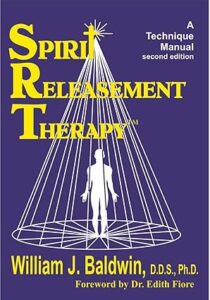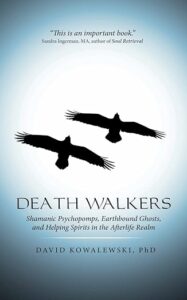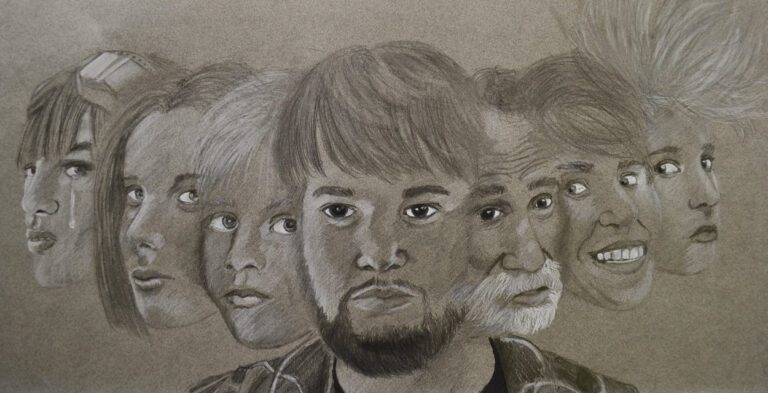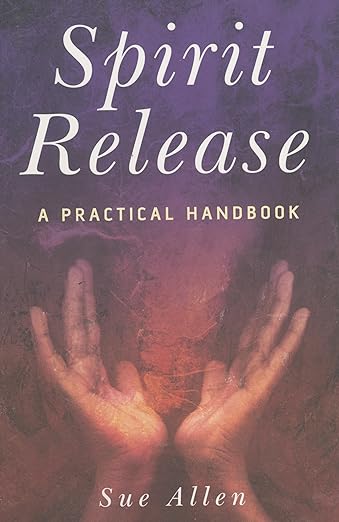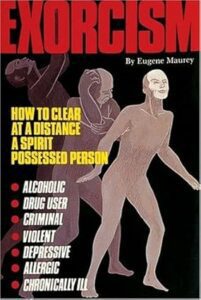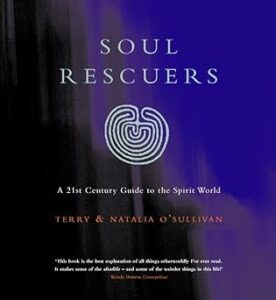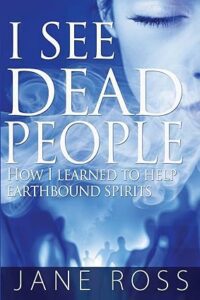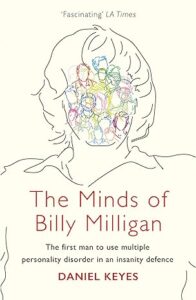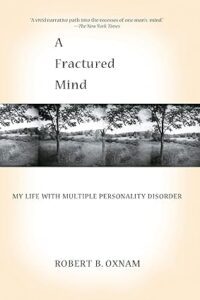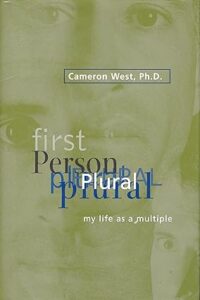Releasement of Earthbound Spirits
I began a very intense spiritual journey in 1984, but it wasn’t until 2024 that I stumbled upon the world of ghosts, a well-known kind of earthbound spirit, during my research on past-life regression (see “Books about Past-Life and Between-Lives Regression” on my Reincarnation resource page). Like many other Americans, I believed in ghosts, but I felt initially that they were unimportant to my understanding of reincarnation. However, what I have since discovered about ghosts is fascinating. I now believe that this information is important for everyone, especially people on a spiritual journey. Here, I share some of what I have learned.
To contemplate ghosts, it is helpful to have a sense of what typically happens after someone dies. In recent decades, advances in medicine have sometimes permitted resuscitation of a clinically dead patient. Some resuscitated people report having had a near-death experience (NDE) while they were clinically dead, and this phenomenon has been widely documented. Research into NDEs has revealed a range of experiences, most of them positive and loving. Typically, in an NDE, a soul will initially be attracted to and then go to a Light at the end of a dark tunnel or passageway. Other components of an NDE that are often experienced are feelings of being immersed in intense love and acceptance, communication with a “Being of Light,” and being reunited with deceased loved ones before returning to their revived physical body. NDEs provide a framework for what might happen after death. On my Near-Death Experiences resource page, I summarize typical NDE elements that have received much public awareness and acceptance.
On this resource page, I introduce earthbound spirits and the possibility of them attaching to people, places or objects, and even possessing people. I then briefly discuss how those earthbound spirits can be released into the Light of higher realms. This resource page contains the following sections:

However, after leaving their body upon death some spirits do not make it to the Light for a variety of reasons. Instead, they become earthbound. An earthbound spirit resides in an in-between state in an astral world in the lower astral realm. Though earthbound spirits lack physical bodies, they are energetically entangled with the physical world—the “earth plane.” This environment is the polar opposite of the love, peace, joy and harmony experienced in the higher realms by those spirits that cross over to the Light.
Note: Earthbound spirits are not to be confused with spirits whose souls have transitioned to the Light, but who sometimes reach out to provide loving support to loved ones on earth.
There is much confusion about what earthbound spirits are, but based on my extensive reading, I have learned about three types that impact the earth plane—ghosts, poltergeists, and demons:
- Ghosts are spirits of deceased human beings who have yet to find a way to fully depart the realm of living people. Unlike the multitude of spirits that proceed to the Light soon after physical death, ghosts remain in their astral body, a subtle energy duplicate of their former physical body. They can appear as apparitions, which are visible to some people as complete or partial astral replicas of their physical appearance, transparent entities, or foggy mists. Ghostly activity is known as a “haunting.”
Most adults in the U.S. believe they have a soul in addition to their physical body. Pew Research Center’s December 2023 study shows that 83% of us do. But many Americans also believe in ghosts (41% according to a 2024 Civic Science report).
- Poltergeists are a form of energy that is expressed by an earthbound human spirit. They are pranksters who can move physical objects. Generally, the authors of the books that appear in the library following this introduction report that poltergeists are most often the spirits of those who have died at a young age. Poltergeists are aware of their actions and may reveal their presence by moving or influencing objects. Poltergeist activity is known as a “disturbance.”
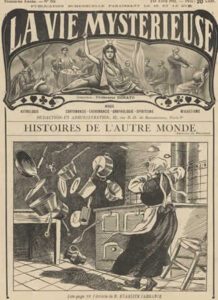
- I was shocked to learn that demons actually exist. Demons are generally categorized as spirits, even though they differ from ghosts and poltergeists, which had previously incarnated as humans. Demons are entities that spread negativity, especially anger and fear. Contrary to typical beliefs, they are not fundamentally evil. In fact, they have a suppressed core of divine Light that has been imprisoned within a cloak of aggressive dark energy whose intent is to cause harm to human beings, ghosts, and poltergeists. My research in this area is limited to spirit releasement, and I have no idea if demons harm anything in addition to incarnate and disincarnate humans.
When considering earthbound spirits, it is essential to understand that the true nature or essence of every person and every spirit, including demons, is Light and Love, which are actually the same thing. The Light that all spirits eventually go to is the Light and Love of the Creator, for the same Light is within each of them. The Light and Love of the higher realms is our Home. This Light is similar to the Light that near-death-experiencers describe—much brighter than ordinary light, but easy to take in.
Even though every spirit is meant to go to the Light soon after it leaves the body, typically, after death, a spirit experiences a period of adjustment. For example, often a spirit sticks around to watch its funeral or memorial service. After this initial adjustment period, I believe that the majority of spirits cross over into the Light. However, I sense that a considerable number of spirits do not, though it would be impossible to determine how many. A spirit that does not cross over becomes earthbound. I believe it is important for people to become aware of this possibility.
Ghosts and poltergeists could be considered lost souls: They are no longer in their physical bodies, but they are not in the higher nonphysical realms, or “Home,” where they originated. As earthbound spirits, their conscious awareness is locked into the physical, and this is all they can perceive. As a result, they are not aware of high vibrational spirits from the Light who are attempting to rescue them from their misery in the lower astral realm so they can be guided Home.
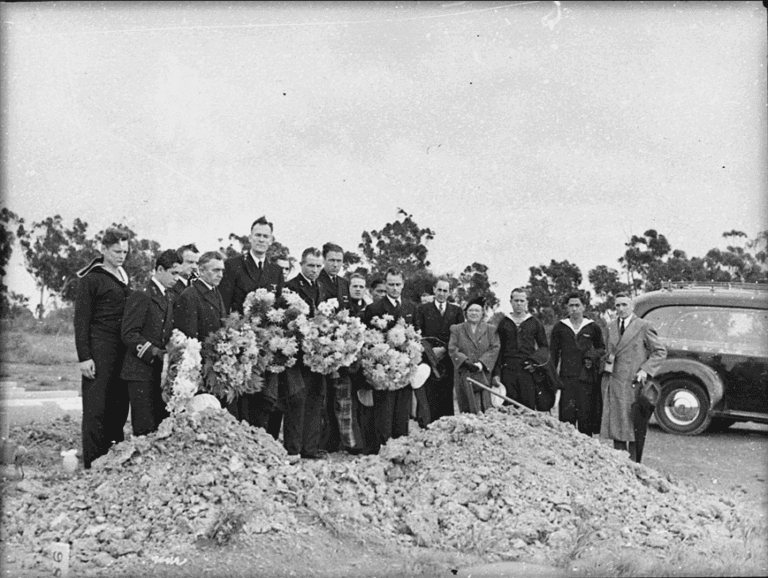
I believe that the majority of spirits cross over to the Light after death. Why do some human spirits fail to crossover into the Light? Although death is a shift in consciousness from the earthly dimension to the spiritual dimension, when a person dies, their level of consciousness does not change. Thus, the primary factor that determines whether a person’s spirit goes to the Light or becomes earthbound is based on personal choices that express their level of human consciousness. For example, a violent or sudden death may result in the failure of the spirit to recognize that death occurred, so it does not choose to “go to the Light” to cross over to the higher realms.
Though there are many reasons why some spirits do not cross over to the higher realms, the primary underlying causes are addictions, attachments, and false beliefs about the afterlife. Major addictions seem to be alcohol and drug addictions. Sex, smoking, and food addictions can also cause spirits to become earthbound. Attachments that cause spirits to remain earthbound may be to wealth and power and may even be to objects like jewelry and cars.
False beliefs about the afterlife can also cause a spirit to become earthbound. Some people who die with the belief that they might go to the Christian version of hell keep their souls earthbound for fear of going to hell. The false belief that existence ceases with the death of the body can cause the spirits of atheists to become earthbound.
Sometimes the spirits of people who die in hospitals believe they belong there and will remain there. If a person believes that they have been wronged and is seeking revenge, their spirit may not cross over. At the opposite end of the spectrum, the spirit of a person who believes that they need to look after and protect their surviving spouse or other loved ones may become earthbound.

I wish to empasize that the spirit of a person who experiences any of these conditions at physical death may well not become earthbound. It seems that the greater the intensity of any of these factors, the greater the likelihood it could cause a spirit to become earthbound.
Earthbound human spirits are often referred to as being “stuck.” This is a common description because they do appear to be stuck or unable to transition to the Light. However, all earthbound spirits will eventually go to the Light. Sometimes, a confused earthbound spirit can be convinced to go to the Light by a psychically aware, compassionate person. In other cases, earthbound spirits change their beliefs or reach a stage of frustration or boredom such that they want to make a change. In such situations, the spirits may be helped to transition to the Light by the spirits of departed loved ones, or they may become receptive to receiving the help of advanced beings from the higher realms who are dedicated to helping earthbound spirits go to the Light.
Attachment and Possession
It seems that the majority of earthbound spirits linger in various places or a particular place, or they may wander. Haunted houses are a prime example of spirits being attached to a place. Other earthbound spirits attach to a person by forming an energetic attachment to the person’s aura, the energetic field that extends beyond a person’s physical body. Still others actually possess a person. A possessing spirit exists inside (inhabits) a person’s body and can control some of their thoughts, feelings and actions.
Earthbound spirits can cause a variety of problems for living people. Attachment or possession can happen when an earthbound spirit is drawn to a person’s unresolved trauma or pain. Some people who show disturbing signs of distress, whether it be physical, mental or emotional, or a combination of any of such symptoms, are being negatively influenced by spirit attachment or possession. Especially telling is someone whose personality or health makes a dramatic change after being taken over by a possessing earthbound spirit.
People suffering from the influence of an earthbound spirit can find secular relief and healing through spirit releasement therapy. A distinguishing attribute of spirit releasement is the recognition that every earthbound spirit, including demons, deserves to go to the Light.
Warning: Avoid Earthbound Spirits. Spirit releasement therapists and other healers are adamant about warning people to avoid inviting earthbound spirits or demons into their lives. They warn people to stay away from any activities or groups that are attracted to or attract dark forces. They are unanimous in warning people to stay away from Ouija boards, which are designed for people to communicate with earthbound spirits, which are often of dubious nature. Sometimes people (usually young people) use a Ouija board for fun or out of curiosity. But such innocent play can lead to being possessed by an earthbound spirit.
Spirit Releasement
It is prudent to remove, or release, attached or possessing spirits. This requires intervention through some form of spirit releasement. Spirit releasement is a vast and complicated subject. It applies to the release of earthbound spirits from places and objects as well as from people. Moreover, so much depends on factors such as the talents and abilities of the person performing the spirit releasement; the beliefs, addictions, and attachments of the earthbound spirits; the level of distress they are causing people; and the awareness of an adversely affected person and their willingness to seek treatment.
This introduction will allow me to just barely touch on this subject. I briefly consider two diametrically opposed approaches: spirit releasement therapy and Christian exorcism.
Spirit Releasement Therapy
The goal of spirit releasement therapy is to help relieve physical, emotional, and/or mental suffering of people who are being negatively impacted by one or more earthbound spirits. Psychiatrists, medical doctors, psychotherapists, and healers sometimes work as spirit releasement therapists. For simplicity, I refer to all of them as practitioners. Most work face-to-face with clients; some work remotely. I have read amazing accounts of people recovering from severe maladies as a result of a spirit releasement therapy.
Note: Whereas Christianity teaches that a person’s soul has but one lifetime and ultimately goes to heaven or hell for eternity, almost all spirit releasement practitioners recognize that earthbound spirits are part of the cycle of reincarnation.
Spirit releasement practitioners communicate with earthbound spirits to facilitate their release from the earth plane. As an integral aspect of this communication, the practitioners bring compassion and understanding to encourage the released spirits to ascend directly to their true Home in the higher spiritual realms.
The authors of the books on spirit releasement presented in the Science-Based Awakening Library of this resource page are all spirit releasement practitioners who are or were actively involved in the process of healing. They stress that earthbound spirits, as well as the people they affect, are suffering to some degree. It is not a positive situation for either the people or the spirits. This is even true for spirits who became earthbound because they wanted to protect the loved one(s) they left behind on earth.
Contacting and communicating with earthbound spirits can occur in a wide variety of ways. Practitioners may use clairvoyance to see earthbound spirits, clairaudience to telepathically communicate with them, claircognizance (inner knowing) to perceive them, and/or clairsentience, the acquisition of knowledge by means of feeling. Some practitioners use a psychic medium to assist them.
Every spirit releasement practitioner brings their own style and procedure to spirit releasements, but some methods are typical. Here, I present basic steps of a simplified example of a spirit releasement that incorporates several such methods:
Basic Steps of an Idealized Releasement Therapy Session
- The practitioner considers the nature of the client’s symptoms and determines whether the negative presence of one or more earthbound spirits is evident in or around the client. If there are more than one spirit, the practitioner addresses only one at a time. To begin, the practitioner determines why and how that spirit has harmed the client. The practitioner finds out whether the spirit is aware that it has died. If the spirit is not aware of its death, the practitioner informs it of this.
- The practitioner then explains why the spirit should not be attached to the person’s body (or to a place or object) or be possessing the person’s body. The practitioner then tells the spirit that it is in the wrong place and explains that now is the time to leave it.
- To convince the spirit, the practitioner explains that it is worthy of deserving to go to a better place, a place of love, peace and harmony and that their deceased loved ones and/or higher beings of Light will help them go there.
- The practitioner calls forth departed loved ones, spirit guides, and/or angels to assist the earthbound spirit in this transition and then directs the earthbound spirit to “go to the Light,” inducing it to leave the client’s body and ascend to its Home in the higher realms.
These are the basic steps of an idealized spirit releasement therapy session. Each therapy session is unique.
The term depossession describes the compassionate spirit releasement of a demon from a human. The practitioner guides the demon to the Light. William J. Baldwin, Ph.D., author of Healing Lost Souls: Releasing Unwanted Spirits from Your Energy Body, wrote a detailed account of a case of a demon that he was able to release from his client. This account reproduced word-for-word the dialogue between Dr. Baldwin and a demon who was speaking through his client. The final words of the demon were “I choose the Light,” just before it left his client’s body and transited to the Light of higher dimensions.
Dr. Baldwin summarized this session as follows:
This is the transformation of a demon, a dark form entity, and it generally follows this pattern. It is a straightforward therapeutic approach that can be learned and practiced by any open-minded therapist.
This is a releasement, or “exorcism,” of a demon. Not from an adversarial position of a priest, not with the rancor and animosity towards this foul thing, but a compassionate stance of tough love for a God-created being who went astray.
For a short YouTube video of part of this spirit releasement session with Dr. Baldwin and his client, see William Baldwin Depossession.
Psychopomps
In addition, to spirit releasement therapists, there are practitioners who work as psychopomps, who help escort earthbound spirits to the Light (the “other side”). The term psychopomp is a derivation of the Greek word psychopompós, meaning the ‘guide of souls.’ Psychopomps are shamans, or occasionally other people, who are able to travel to the spirit realms in an out-of-body state to help guide earthbound spirits to the higher realms of Light.
A shaman is a specially trained person who accesses the spirit world for healing and other beneficial purposes. Historically, shamans are associated with indigenous societies, with the earliest known undisputed evidence of shamans and shamanic practices dating back about 30,000 years. According to the Oxford Dictionary, “a shaman is someone who is regarded as having access to, and influence in, the world of benevolent and malevolent spirits, who typically enters into a trance state during a ritual, and practices divination and healing.” Other names for shamans include healers or medicine men and women.

Shamans practice an ancient cultural phenomenon known as shamanism. Shamanism is based on the awareness that the visible world is pervaded by invisible forces, including earthbound spirits, that affect people’s lives. Shamanism recognizes that shamans, with their connection to the “otherworld” of spirits, have the capacity, among other things, to guide wandering spirits of the dead to the higher realms and to remove unwanted nonphysical entities from people or places. For this reason, psychopomp work is a core shamanic practice.
In recent decades, there has been renewed participation in shamanism around the world, including shamans’ psychopomp work. A leading scholar of shamanic psychopomp work is Dr. David Kowalewski, Ph.D., who is a shaman in his own right. He is the author of Death Walkers: Shamanic Psychopomps, Earthbound Ghosts, and Helping Spirits in the Afterlife Realm (2015), which documents shamanic psychopomp work. Dr. Kowalewski has impressive credentials and awards: He has twice been both a Fulbright Scholar and a U.S. National Endowment for the Humanities grantee. He has studied with the shamans of many continents and is a graduate of extended training by the Foundation for Shamanic Studies.
Dr. Kowalewski offered an informative introduction to his psychopomp work during an interview with Christina Pratt (Psychopomp—to Conduct the Souls of the Dead with David Kowalewski):
Most people have no problem transiting from this ordinary-reality life to beyond or the other side or through the Light and on to their next adventure. …ordinary-reality life is just one leg of the journey. When we go to the other side, we resume our soul’s journey.
[However, after] some people die, they get trapped or stuck or earthbound for a whole variety of reasons, and they can’t move on. The picture I have …is that the soul is fixated on looking down toward the earth to their old life instead of looking up to the Light, to the other side, to their new life. They’re kind of stuck between lives.
What the shaman who does psychopomp work does is to contact these discarnate souls and help them work out their psycho-spiritual dilemmas. That’s the big journey adventure of the shaman psychopomp. Basically, it’s turning them from looking down to their old earthbound life …to get them to their new life and bring them up to the Light and through the Light to their next adventure.
The actual fact is that the spirit helpers do all the work. Sometimes I think that I’m just along for the ride. So I better give the spirit helpers 90% of the credit because they are absolute geniuses at figuring this out.
Note that psychopomp work is not limited to shamanic traditions. Sometimes other out-of-body travelers work with helper spirits to guide earthbound spirits to the Light, though they may not call themselves “psychopomps.” For example, the Lifeline program of the Monroe Institute is a service-oriented program in which participants work in an out-of-body state on the inner plane to retrieve stuck spirits. Participants work with higher-dimensional beings known as “Helpers.”
In contrast to spirit releasement therapy, exorcism is a traditional religious approach to expelling earthbound spirits. Historically, in Christianity, specialized clergy have performed exorcisms to forcibly expel demons. The Catechism of the Catholic Church states: “When the Church asks publicly and authoritatively in the name of Jesus Christ that a person or object be protected against the power of the Evil One and withdrawn from his dominion, it is called exorcism.” A person who performs exorcisms is an exorcist.
The Roman Catholic Church’s belief that souls go exclusively to heaven, hell, or purgatory is not correct. For openers, it does not allow for the existence of the in-between state in the lower astral plane, where earthbound human spirits reside. Therefore, in Church dogma, all etheric entities that are adversely affecting people, including ghosts and poltergeists, are labeled demons and are arbitrarily considered evil.
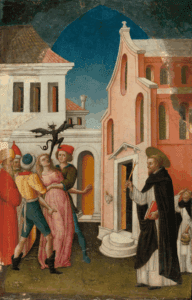
The Encyclopedia Britannica expresses this in its definition of exorcism as, “an adjuration addressed to evil spirits to force them to abandon an object, place, or person; a ceremony [that is] used in both Jewish and Christian Traditions to expel demons from persons who have come under their power. Christian dogma asserts that the non-physical entities that control people, objects and places are evil, whether in the form of demons or spirits.” As a consequence, in a Roman Catholic exorcism, a priest drives an assumed demon out of a body without any regard for where it goes afterwards. The exorcists do not attempt to send earthbound spirits to the Light, in contrast to a spirit releasement therapist such as Dr. Baldwin.
History of Christian Exorcism
Exorcism was much more common in the past than it is today. In his book Possession & Exorcism (1988), Swiss psychiatrist Hans Naegeli-Osjord, M.D. cited a report about Martin Luther, a Catholic priest, who started the Protestant Reformation in 1517. Luther performed an exorcism on an eight-year-old girl in the area of Meissen, a German town. Naegeli-Osjord states that exorcisms were performed in Lutheran churches in Europe until the 17th century, but he concludes, “Today, in Europe, exorcism within the Protestant church is virtually unknown.” In the U.S., the Roman Catholic Church is by far the most active in performing exorcisms. According to a priest who has performed exorcisms in the Archdiocese of Indianapolis, in 2023, the Roman Catholic Church had 175 exorcist priests in the U.S. In contrast, exorcism is uncommon in the Protestant religions.
The contemporary American public was introduced to exorcism in 1973 with the release of The Exorcist, which became the highest grossing horror movie of all time. The movie created quite a stir. The Catholic Church officially gave it a cautionary rating and a critical review, while Protestant leaders and groups condemned it.
Example: A Modern Roman Catholic Exorcism
One of the most well-known cases of demonic possession in the U.S. occurred in the home of Latoya Ammons in Gary, Indiana. The exorcism of these demons is described in the following sources:
- A lengthy 2014 account from London’s Daily Mail with many photos
- A recent in-depth video interview on YouTube of the Roman Catholic priest Michael Maginot who performed the exorcism: The Possession of Latoya Ammons and the ‘200 Demons House’ (1.48 hours)
In the process of doing my research on earthbound spirits, I wondered whether similarities exist between spirit possession (or attachment) and dissociative identity disorder and, if so, whether any correlation exists. Dissociative identity disorder (DID) is a severe form of mental dissociation that produces disruption of a person’s thoughts, feelings, memories, actions, and sense of identity. DID is characterized by the presence of two or more separate alternate identities (distinct personality states), often called “alters,” which control a person’s behavior at different times. Each alter has its own exclusive traits (including name, gender, and age), likes and dislikes, and personal history. The back-and-forth shifting between two or more alters causes significant fragmentation of the person’s lived experience.
Multiple Personality Disorder (MPD)
The precursor to the term dissociative identity disorder was multiple personality disorder (MPD), which likewise referred to severe mental dissociation. MPD was popularized in the mid-Twentieth Century by two books, The Three Faces of Eve and Sybil, and their movie spin-offs.
In 1957, two psychiatrists published a bestselling book, The Three Faces of Eve, about their patient Chris Costner Sizemore, whom they diagnosed as having multiple personality disorder (MPD). To protect their patient’s identity, they used the name Eve in their book. The book was followed by a movie of the same name, which won six Academy Awards. This book and movie introduced the general public to the concept of MPD. However, eventually, their book was discredited as mostly fiction. I recently watched the movie and discovered that it too was mostly fiction, especially the happy Hollywood ending—a total departure from what had actually happened based on two books later written by Sizemore.
In 1973, another bestselling book covering a purported case of MPD was released—Sybil: The Classic True Story of a Woman Possessed by Sixteen Personalities. This book sold over six million copies. Eventually, two made-for-TV movies, both entitled Sybil , were released, one in 1976 starring Sally Field and the other in 2007 (these are distinct from the 2019 comedy-drama film of the same name). However, the story of Sybil has been thoroughly discredited. The book was written by a journalist who has been accused of making up some of the personalities in order to secure a book deal. Even the so-called patient later stated that she never had an MPD, though her statement has also been called into question.
Note: Because The Three Faces of Eve and Sybil have been thoroughly discredited they are omitted from the Science-Based Awakening Library.
two “Dissociative Identity” Has Superseded “Multiple Personality”
The American Psychological Association (APA) maintains a widely accepted taxonomic and diagnostic publication, the Diagnostic and Statistical Manual of Mental Disorders (DSM). By the fourth edition (DSM-IV), published in 1994, the notion of “multiple personality” had fallen out of favor, and the APA endorsed the concept of “dissociative identity.” This change reflected a shift towards a focus on the fragmentation of identity and consciousness. Such fragmentation can result from extreme trauma. The type of trauma that engenders DID is thought to be prolonged and severe, often involving physical, sexual, or emotional abuse in childhood. However, DID may also be triggered by other overwhelming experiences such as natural disasters, neglect, or witnessing violence.
The latest edition of the DSM (DSM-5), published in 2013, retains DID on its list of mental disorders. However, it is among the most controversial disorders. The main dispute exists between those who believe DID is a very real disorder that results from traumatic stresses that split the mind into multiple identities and those who think the symptoms of DID are produced artificially by certain psychotherapeutic practices or by patients playing a role they believe to be appropriate for a person with DID.
Based on my admittedly limited research, the evidence suggests that DIDs do indeed exist and are a very real coping mechanism. The emergence of separate, distinct personalities compartmentalizes the awareness of and responses to trauma, thereby enabling an individual to cope with extraordinary traumatic experiences.
Treatment of a person with DID typically consists of psychotherapy, particularly trauma-focused therapy, that attempts to address the underlying trauma and identify the person’s distinct alters. The most common treatment objective is to integrate and unify the alters into a single, functional personality that is able to lead a normal life. However, a person with DID may prefer to keep their alters rather than integrating and unifying them.
Books about DID have proved to be far more trustworthy than the two discredited MPD books that are mentioned above. I have carefully selected some popular DID books that are considered authentic; these are listed by author in the Dissociative Identity Disorder section of the Science-Based Awakening Library, below. I include some salient information about each book.
Note: The APA does not recognize spirit possession or attachment. In fact, the APA simply does not recognize spirits at all. However, I did discover that there is a reference to spirits and possession in DSM-5, “The alter(s) may sometimes be mistaken for spirits and the experience of dissociation for one of possession.”
My Spiritual Perspective
I have determined that, from a nonspiritual perspective, DID and spirit possession are clearly distinct, separate conditions. However, from my spiritual perspective, I interpret both of these conditions in terms of their impact on the soul that is the person’s essence:
- Dissociative identity disorder is a soul dwelling in a body with its mind fragmenting into two or more personalities.
- Spirit possession is a soul dwelling in a body with one or more earthbound spirits possessing (or attaching to) its body/mind.
With either condition, the soul experiences “all of it,” that is, the sum of the person’s various experiences, whether traumatic or nurturing. The soul experiences the trauma that led up to the DID or spirit possession. Moreover, if the person recovers and heals, typically through psychological therapy for DID or spirit releasement therapy for possession or attachment, the person may experience courage, compassion, creativity, perseverance, patience, and/or other positive qualities. Such qualities become integral to the person’s soul and contribute to its evolution; the soul can then take those qualities into its continuing existence. This totality of experience enables the soul to increasingly deepen into its true nature—wholeness, pure consciousness, and unconditional Love.
It is essential to recognize that spirits are never earthbound indefinitely. Ultimately, all earthbound spirits will transition to the Light for, eventually, all souls return to the Source.


Earthbound Spirits Resources
Organizations
- Spirit Release Forum
The Spirit Release Forum is a meeting place for those interested in exploring spirit release issues.
Books
Note: Book titles are linked to amazon.com, which offers numerous book reviews.
The books referenced below are a resource for you and those you love. These books fall into the following categories:
- Earthbound Spirits (Souls)
These books provide information about earthbound spirits.
- Dissociative Identity Disorder
These books provide information about dissociative identity disorder, which is distinct from possession or attachment by an earthbound spirit.
Books about Earthbound Spirits (Souls)
Upon death, some people’s spirits (souls) do not make it to the nonphysical realms for a variety of reasons and become stuck on earth. Some of these are perceived as ghosts and poltergeists. Others attach to people (attachments), while still others possess or inhabit them (possessions). People suffering from an attachment or possession can find relief through Spirit Releasement Therapy.
Allen, Sue
Spirit Release: A Practical Handbook
by Sue Allen, 235 pages (2007)
Sue Allen is a psychotherapist, healer and teacher. Her book has been used as course material at the College of Psychic Studies in London.
Baldwin, William J., Ph.D.
Dr. Baldwin is considered one of the most influential authors in the field of Soul Releasement. Baldwin coined the terms “Spirit Releasement” and “Spirit Attachment.”
Spirit Releasement Therapy: A Technique Manual
by Baldwin, William J., Ph.D., 480 pages (1995)
Denning, Hazel M., Ph.D.
by Hazel M. Denning, Ph.D., 220 pages (1996)
“Hazel Denning is the grande dame of past-life regression therapy, and True Hauntings is a gem!” — William J. Baldwin, D.D.S., Ph.D., author of Healing Lost Souls and Spirit Releasement Therapy: A Technique Manuel.
Fiore, Edith, Ph.D.
by Edith Fiore, Ph.D.,174 pages (1988)
Dr. Fiore’s previous book on reincarnation, You Have Been Here Before, is listed in the Past-Life and Between-Lives Regression section on this resource page. She is considered a pioneer in the field of hypnotic regression. According to The Unquiet Dead, she performed more than 20,000 hypnotic regressions with over one thousand patients.
Ireland-Frey, Louise, M.D.
Freeing the Captives: The Emerging Therapy of Treating Spirit Attachment
by Louise Ireland-Frey, M.D., 333 pages (1999)
Kowaleski, David, Ph.D.
by David Kowaleski, Ph. D., 197 pages (2015)
Dr. Kowalewski is twice a Fulbright Scholar and twice a U.S. National Endowment for the Humanities grantee. He has studied with the shamans of many continents and is a graduate of extended training by the Foundation for Shamanic Studies. Psychopomp work—the escorting discarnate souls to the Other Side—has been one of the core shamanic practices since ancient times.
Maurey, Eugene
by Eugene Maurey, 171 pages (1988)
Maurey used clairvoyance, clairaudience, and a pendulum to perform spirit releasements. He states that he cleared 3,000 persons in the seven years prior to writing this book. </pThe book title, Exorcism, is misleading because Maurey clearly states that he doesn’t believe in demons. However, he used the now-outdated terms “exorcism” and “depossession” to describe “spirit releasement,” because this term was not yet widely used.
Modi, Shakuntala, M.D.
Remarkable Healings: A Psychiatrist Discovers Unsuspected Roots of Mental and Physical Illness
by Shakuntala Modi, M.D., 621 pages (1997)
Naegeli-Osjord, Hans, M.D.
by Hans Naegeli-Osjord, M.D., 186 pages (1988)
The author was a Swiss Psychiatrist who practiced in Zurich, Switzerland for 50 years. He also travelled the world investigating possession, which he covered in this book. He was president of the Swiss Society for Parapsychology.
O’Sullivan, Terry and Natalia
by Terry and Natalia O’Sullivan, 244 pages (1999)
Pechet, Ellie, M.Ed.
by Terry and Natalia O’Sullivan, 244 pages (1999)
Website: PhoenixRisingHealing.com
Rodriguez, Patrick
by Patrick Rodriguez, 76 pages (2013)
This book is only 76 pages, but the pages are quite large (8″X10”).
Website: SoulRescueSite.com
Video: Soul Rescue Manual
Ross, Jane
I See Dead People: How I Learned to Help Earthbound Spirits
by Jane Ross, 73 pages (2013)
Wickland, Carl, M.D.
Thirty Years Among the Dead
by Carl Wickland, M.D., 476 pages (2011)
Carl Wickland was chief psychiatrist at the National Psychopathic Institute in Chicago in 1918. He later established the National Psychological Institute in Los Angeles where he continued his work in healing spirit obsession. His seminal work in the treatment of spirit obsession and possession is chronicled in Thirty Years among the Dead, which was first published in 1924. He is considered a trailblazer in his field.
Williamson, Linda
Ghosts and Earth Bound Spirits
by Linda Williamson, 223 pages (2006)
This book discusses how to recognize spirits trapped in this world and release them.
Winkowski, Mary Ann
When Ghosts Speak: Understanding the World of Earthbound Spirits
by Mary Ann Winkowski, 238 pages (2007)
Ms. Winkowski has seen and talked to ghosts for more than 50 years. She was a consultant on the popular CBS television series Ghost Whisperer.
Website: MaryAnnWinkowski.com
Books about Dissociative Identity Disorder (as Distinct from Earthbound Spirits)
These books provide information about dissociative identity disorder, which is distinct from possession or attachment by an earthbound spirit. Dissociative Identity Disorder (DID) is sometimes called Multiple Personality Disorder (MPD).
Haddock, Deborah Bray, M.Ed., M.A., L.P.
The Dissociative Identity Disorder Sourcebook
by Deborah Bray Haddock, M.Ed., M.A., L.P., 311 pages (2001)
“The Dissociative Identity Disorder Sourcebook is the first resource to describe the genesis of DID and the process of treatment with both simplicity and sophistication.” — James A. Chu, M.D., Chief of Hospital Clinical Services, McLean Hospital: Associate Professor of Psychiatry, Harvard Medical School and author of Rebuilding Shattered Lives.
Haynes, Jeni and Blair-West, Dr. George
The Girl in the Green Dress: The Confronting and Inspiring True Life Story of Jeni Haynes, a Woman Who Suffered Unimaginable Abuse and Developed Multiple Personalities to Survive
by Jeni Haynes and Dr. George Blair-West, 431 pages (2022)
This book was co-authored by a DID survivor, Jeni Haynes (who was the girl in the green dress), and Dr. George Blair-West, who is an author, researcher and doctor specializing in psychiatry.
The original girl in the green dress was named Jenifer Linda. Her father repeatedly and brutally raped and tortured her throughout her childhood. After Jenifer Linda was 6 months old, her personality was displaced by “Symphony,” her original “alter,” or alternate personality. Symphony stated that she has 2,681 alters. Today, the primary spokesperson for the alters is named Jeni Haynes. Jeni says that her MPD saved her life and her soul.
A number of her alters testified in court in Australia against the father for his atrocities. He was convicted and sentenced to 45 years in jail. This case is reportedly believed to be the first time in which the testimony of different parts of person with DID was taken at face value into the court system and led to a conviction.
Keyes, Daniel
The Minds of Billy Milligan
by Daniel Keyes, 426 pages (1981)
Billy Milligan was tormented by twenty-four distinct personalities. He was arrested for three rapes that happened on the Ohio State University campus in the late 1970s. In preparation for his defense, psychologists diagnosed Milligan with DID. His lawyers had him plead insanity, claiming that two of his alternate personalities committed the crimes without Milligan being aware of it. This was the first case of a person diagnosed with DID raising such a defense. He was the first person to be acquitted for a major crime for this reason. Following the trial, he spent a decade in psychiatric hospitals.
Oxnam, Robert, Ph.D.
by Robert Oxnam, Ph.D., 285 pages (2005)
Oxnam was an American China scholar who was President of the Asia Society New York for more than ten years. He was able to integrate his original eleven personalities into three at the time this book was completed.
Video: Dialogue Web Extra: Robert Oxnam
Article: Robert Oxnam (Wikipedia)
Sizemore, Chris Costner
by Chris Costner Sizemore, 299 pages (1989)
Chris Costner Sizemore, the woman who became famous as “Eve” in the book and movie The Three Faces of Eve, wrote this as the last of four books about her life. Chris was unconscious for forty-four years. She became conscious of herself as Chris only after discovering at least twenty-two alternate personalities that had taken charge of her life for over four decades. In this, her final book, she tells her courageous story of how she was able to integrate and unify her alternate personalities while at the same time adjusting to and developing a new relationship with her husband and her two children.
This book begins by Chris explaining the last stages of her dissociative identity disorder. She went on to become an advocate for mental health as a mental health professional that involved many years of speaking before hundreds of mental health organizations in the U.S. and Europe. In 1982 she received the Clifford W. Beers Award. This is Mental Health America’s highest honor, presented annually to an individual who has lived with mental illness and who exemplifies the work of Clifford W. Beers in improving conditions and attitudes toward people with mental health conditions.
The Troops for Truddi Chase
When Rabbit Howls: A First-Person Account of Multiple Personality, Memory, and Recovery
by The Troops for Truddi Chase, 415 pages (1987)
Truddi Chase is an alias chosen by the woman who said that she was repeatedly and violently sexually and physically abused by her stepfather and neglected and beaten by her mother as a child for fourteen years. She developed ninety-two alternative personalities, and her original personality has not been present since she was two years old. The personalities that speak and write for her refer to themselves as “The Troops.” According to her psychotherapist, Dr. Robert A. Phillips, Jr., Ph.D., “After I became aware of the multiple persons, I fully expected that the goal of psychotherapy would be to find the central person and to integrate the others into the process of that one. However, I discovered that the ‘core’ was dead, and the process of healing would most likely result in a number of persons who spoke through the ‘shell’ of a woman.”
Video: Oprah Interviews a Woman with 92 Personalities | The Oprah Winfrey Show | Oprah Winfrey Network
Article: Truddi Chase (Wikipedia)
Trujillo, Olga R.
by Orga R. Trujillo, 234 pages (2011)
Olga Trujillo experienced years of abuse and rape by her father. She was diagnosed with DID at the age of 31. She is an attorney who speaks and consults on the subject of DID.
Walker, Herschel
by Herschel Walker, 238 pages (2008)
Walker had an illustrious career as a running back in college and in professional football. He became a Heisman Trophy Winner in 1982. Shortly after his playing career ended, he was diagnosed with DID. He may have had as many as twelve distinct alternate personalities.
Video: Herschel Walker: Breaking Free
Article: Herschel Walker (Wikipedia)
West, Cameron, Ph.D.
First Person Plural: My Life as a Multiple
by Cameron West, Ph.D., 319 pages (1999)
New York Times bestseller. Cameron West was a successful businessman, husband, and father, who discovered the first of his twenty-four alternate personalities in his thirties. The first voice belonged to Davy, who recounted horrible sexual abuse that had been kept secret from West. With the support of his wife, as well as his love for her and his son, West accepted his abuse and begin to heal from the damage to his psyche. He went on to earn a Ph.D. in psychotherapy.
Website: CameronWestAuthor.com
Video: Oprah Meets a Husband With 24 Personalities | The Oprah Winfrey Show | Oprah Winfrey Network
Article: First Person Plural (Wikipedia)

